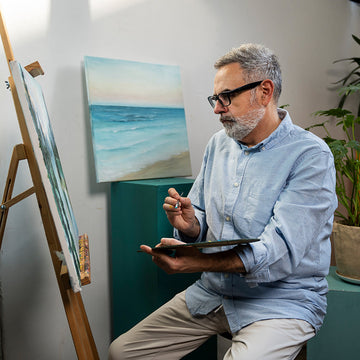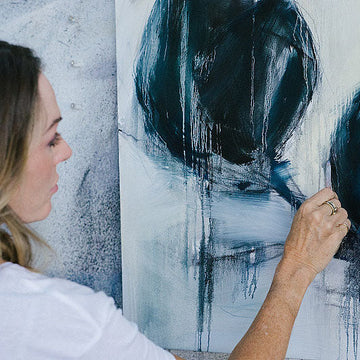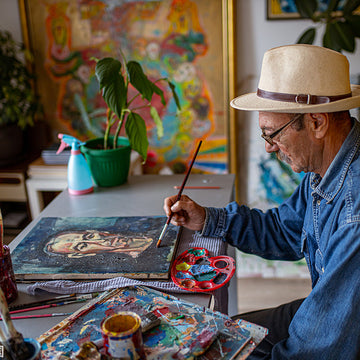Eric Weber is a landscape oil painter known for his delicate handling of light and rich, natural colors. His works don’t aim for grand narratives but focus on capturing quiet, intimate moments in nature—a sunlit forest, a mist-covered stream, or a rock washed by rain. Through these serene scenes, Eric invites us to experience the stillness and slow passage of time in nature.

Techniques He Loves:
-
Wet-on-Wet
Eric loves working on a wet canvas, layering fresh colors on top of a still-damp base. This technique creates soft, seamless transitions, perfect for capturing the gentle light of morning mist or the reflection on water. -
Dry Brush
As the painting nears completion, Eric uses a dry brush with minimal paint to gently sweep across the surface, adding fine details like the texture of leaves, grasses, or rocks. This method enhances the depth and richness of the scene. -
Glazing
Eric often applies thin, transparent layers of glaze over dry paint to allow the underlying colors to show through, subtly adjusting the overall tone. This technique gives his work a sense of depth while maintaining an airy, ethereal quality. -
Palette Knife Painting
In addition to brushes, Eric uses palette knives to apply thick layers of paint, shaping mountains, clouds, and rough textures on the landscape. This adds a tactile, physical quality to the work, giving it more presence and realism.

His Creative Process:
Eric takes his time to observe a scene, often returning to the same place to paint it in different weather conditions and light. He doesn't rely on photos; instead, he captures the colors and atmosphere of nature firsthand. His color palette mainly features earthy tones, occasionally brightened with cool highlights, striking a balance between calmness and liveliness.
Although his work doesn’t center around strong personal symbols or conceptual themes, the slow, flowing sense of time in his landscapes speaks for itself. As he puts it: “Landscape painting isn’t about copying nature, it’s about letting the viewer feel the air of that moment.”





